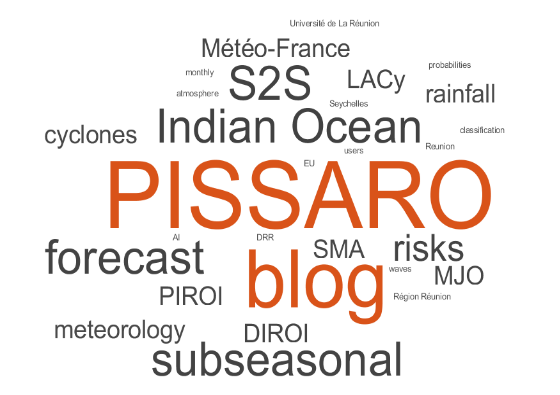Can we improve MJO prediction using artificial intelligence methods?
With Rémy Köth, a student engineer at the ENM (Ecole Nationale de la Métérologie) doing his end-of-study project internship in the PISSARO project, and Quoc-Phi Duong (DESR/LACy), we asked ourselves this question! To answer it, Rémy and Quoc-Phi implemented diagnostics of the MJO over the south-western Indian Ocean basin using intra-seasonal forecast data from the S2S database with artificial intelligence techniques.
After testing several AI methods (machine learning and deep learning), Rémy showed that AI regression methods are able to establish a good diagnosis of the RMM index of the MJO in two forms: the diagnosis of the RMM index and the debiasing of the model with respect to the chosen analysis (BoM). Among the models implemented, the Support Vector Regressor (SVR) proved to be the best performing model, with an accuracy of 71% on the diagnosis of the phase of an intense MJO. In forecasting mode, this AI method performed well, providing more reliable forecasts and extending the predictability threshold from 1 to 2 days. You can read more about these results in the report here (in French) and in a 4-page summary article here (in French).
We congratulate Rémy for his excellent defense and thank him for his active participation in the project. Thanks to Rémy and Quoc-Phi, the PISSARO project has a foot in the world of artificial intelligence!
And we will keep you informed of the progress on the subject…
Hélène Vérèmes and Sylvie Malardel
 Français
Français



